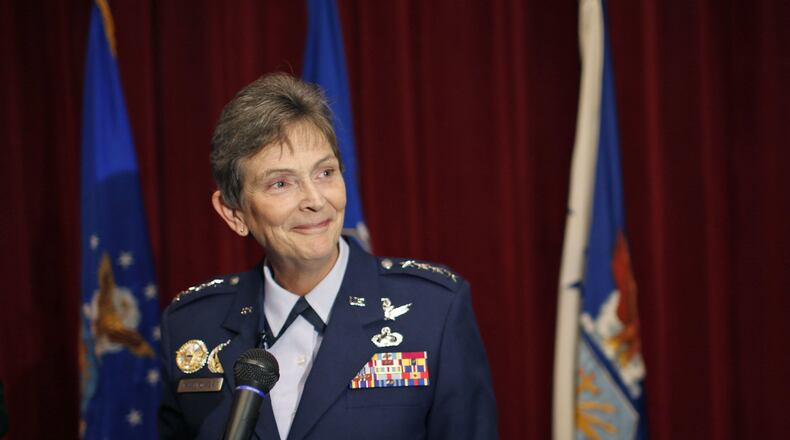With the proliferation of technology in the information age, “our near peers are comparable to us in many areas,” the four-star general said.
---
Watch an interview with General Pawlikowski on WHIO Reports Sunday at 11:30 a.m. on Channel 7, and listen on AM1290 and News 95.7 WHIO at 8:30 a.m. Sunday.
---
“I think the key to the future of the United States is our ability to quickly field this new technology and to adapt and change and to be agile in how we do technology development,” she said. “We will no longer be able to preserve technology for decades the way we used to. It’s just the environment, the information availability around the globe, and the technology work that’s going on in many countries just makes that impossible to happen in the future.”
Credit: DaytonDailyNews
Pawlikowski was interviewed by this news outlet on the public affairs television program “WHIO Reports,” which will broadcasts 11:30 a.m. Sunday on Channel 7, and on WHIO Radio at 8:30 a.m. Sunday.
As AFMC commander, she oversees 80,000 personnel at the mostly civilian employee command and manages a $60 billion annual budget. AFMC develops, tests and buys Air Force weapon systems. The Air Force Life Cycle Management Center and the Air Force Research Laboratory, both part of AFMC, are headquartered at Wright-Patterson.
She took command of AFMC in June 2015, only the third woman in the Air Force to reach the rank of a four-star general. Her predecessor, Gen. Janet Wolfenbarger and a Beavercreek High School graduate, was the first woman to reach the milestone in the military branch.
“When people ask me how do you become a four-star general, I basically tell them that everything I ever needed to know I learned from my mother, who told me two things,” Pawlikowski said. “No matter what job you’re given, always do the best job you can and never quit.”
Credit: Lisa Powell
Credit: Lisa Powell
The high-ranking general has a doctorate in chemical engineering from the University of California-Berkeley and was a past director of Air Force efforts to field an airborne laser.
The former AFRL commander said ensuring technology is ready is “one of the continual challenges in our business” and one reason some new weapon systems exceed budget costs. Engineers, technologists and program managers put rigorous controls in place, she said.
“Do we sometimes make mistakes? Yes. Sometimes we take a technology that’s maybe not ready yet and that’s when you sometimes see challenges with schedules being delayed or things not quite working the way they (should),” she said. “But on the other hand, we have many times where we’ve been very successful and we’ve brought technology to our warfighter in a way that has enabled us to save lives and to be more effective.”
Additive manufacturing, known as 3-D manufacturing, is a “game changer” in technology, she said. It has lowered production costs and allowed parts manufacturing to take place virtually anywhere.
“This has the potential to change the way we support airplanes by making it so that we don’t have to put parts out all over the world,” she said. “We actually build them when we need them … quickly and effectively.”
Wearable technologies, such as a bio sensor that looks like a Band-Aid developed in part inside an AFRL lab at Wright-Patterson, tells a user with a smart phone if they are in danger of dehydration.
“That technology is obviously important to us when we’re caring for airmen that are injured and we’re trying to get them back safely,” she said. “It’s also technology that has applications globally in terms of being able to understand the conditions of patients or even athletes.”
About the Author

